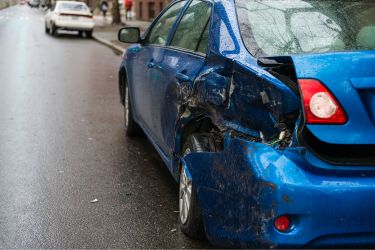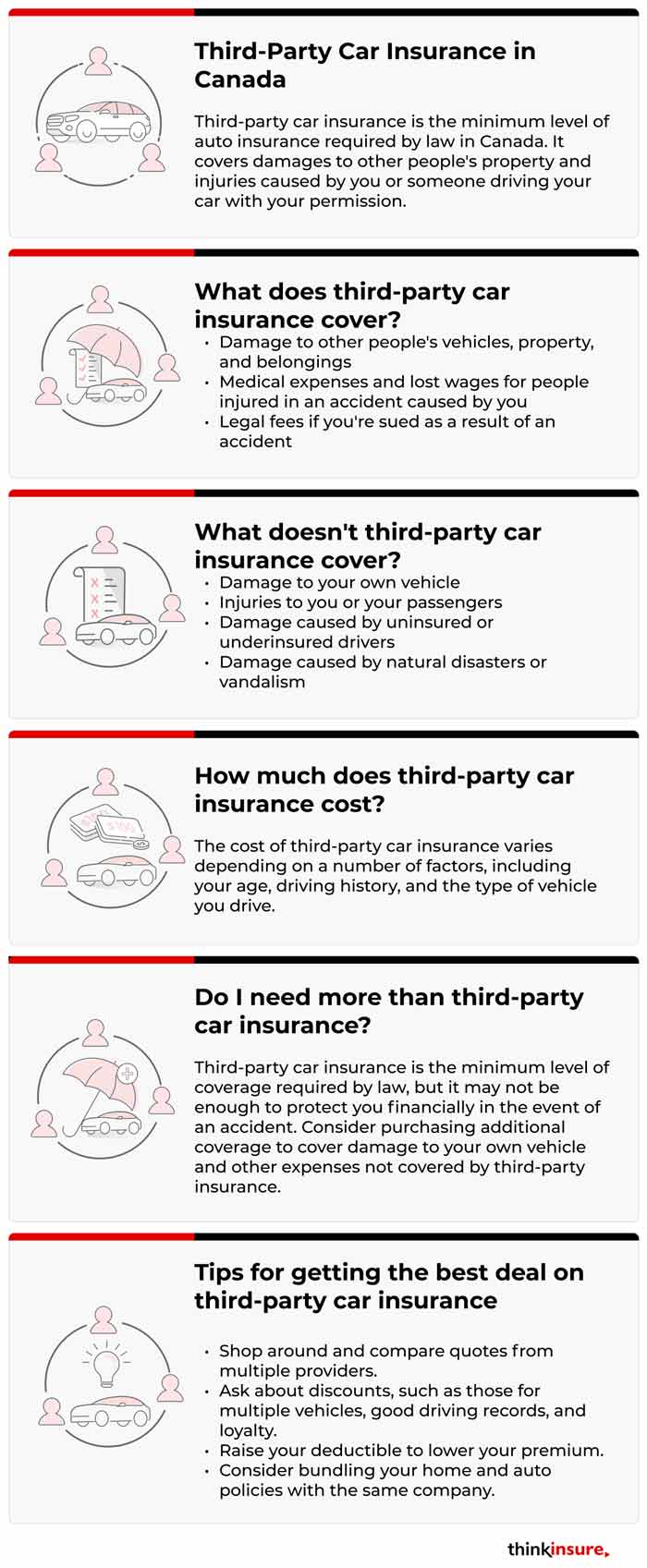
Written by Nolan Wilson Updated on Apr 29, 2025 5 mins read

Third-party liability insurance (TPL) is an important form of protection found in your automobile policy. Even if you do everything you can to prevent damage or injury, they still happen when you are in a crash. Unfortunately, accident claims happen and often result in legal proceedings and lawsuits. According to IBC, third-party liability claims payouts accounted for 46.6% of all direct claims incurred.
When someone makes a claim against you or your insurer, TPL takes effect. If you are found responsible for damage or injury to others, this type of policy ensures you don't have to pay out of pocket for the damages.
Third-party liability insurance provides you with financial protection if you are found to be responsible for an accident resulting in property damage, repairs, personal injury, or death. It is mandatory to have TPL on all Canadian automobile policies.
For example, suppose you rear-end another vehicle, causing injury to the driver and damaging their car. In this case, you would be at-fault and a claim would be filed. This is where TPL will take effect. It will cover the victim's property, repairs, medical costs, and even loss of wages (if applicable).
Third-party liability also exists under your home insurance. This is a different type of coverage that is not applicable to your auto policy.
Your third-party liability covers the following:
Third-party liability does NOT cover the cost of injuries to yourself or damage to your vehicle for an at-fault accident. Accident benefits and collision are used for this. No-fault insurance laws do not protect you from injury lawsuits if you seriously injure third parties in a collision.
If you cause injury, death, or property damage, third-party liability car insurance is applicable and will cover these types of car insurance claims up to your policy limit.
Here are some examples:

Here are two examples that explore the importance of third-party liability:
Example 1: property damage liability
John accidentally rear-ended another car at a traffic light, causing $2,500 in damages. His third-party liability insurance covered the cost of repairs for the other car but did not cover the damage to his own car.
Example 2: bodily injury liability
Sarah ran a red light and collided with Tom's car, causing him to have a broken leg, $15,000 in medical expenses, and lost wages. Sarah's third-party liability car insurance covered Tom's expenses.
All drivers in Canada must have a minimum amount of third-party liability insurance on their auto policy. The compulsory amount is set at the provincial level - most provinces require you to have a minimum of $200,000.
However, due to the cost of medical bills and lawsuits, increasing the limits is highly recommended. You can increase it to $500,000, $1 million, or $2 million without a high increase on your premium.
Once a claim has surpassed your limits, you are required to pay the remaining costs out of pocket. A court judgment or settlement can be applied against your assets. Increasing your limits reduces the chances of this happening.
Third-party insurance is not a standalone policy. It’s included as part of your mandatory coverage, along with accident benefits.
The cost of TPL will depend on your limits, how much additional protection you add such as,collision, comprehensive, Direct Compensation Property Damage (DCPD) and other policy add-ons.
Other factors, such as the vehicle you drive, location, and driving history, will also affect your premium costs.
Basic plans provide you with a minimal amount of coverage. How you use your vehicle can impact the potential risk and damages. It's recommended you increase your limit if:
Third-party liability requirements are set by your provincial regulations. Here is the minimum amount required across Canada:
$200,000 in third-party liability is mandatory in Ontario car insurance. If a claim for damages exceeds this amount, payment for damages will be capped at $10,000, and DCPD applies.

$200,000 in third-party liability is mandatory. If a claim for damages exceeds this amount, payment for property damage is capped at $10,000. Learn more about Alberta car insurance and what's included.
Every province has a minimum of $200,000. Here’s a look at the specifics:
In most cases, your current policy will include third-party liability for your rental car insurance. But, it may or may not cover collision or damage to the rental vehicle. Speak with your advisor to get clarification.
In all accidents, there are three parties involved. The driver is the first party, the insurance company is the second party, and the other driver or person who was injured or had property damaged is the third party.
If you were at-fault for an accident and caused injured or property damage to a third-party, your insurer will review the costs to compensate them and offer a settlement. The third-party can agree to the terms, seek legal advice or file a lawsuit. It will cover costs up to your policy limit.
Contact our team of brokers to learn more about third-party liability as part of your car insurance quote. Call 1-855-550-5515.
| Categories | Auto |
|---|---|
| Tags | Auto Coverage |
Read our insurance blog to get helpful tips, information and news.
Drive safe this winter! Check out these tips for driving in snowy and icy conditions in Ontario. Get other helpful info and FAQs on winter driving.
Drive safer this winter. Learn how the right set of winter tires drastically reduces stopping distance and risk on ice and snow. Get expert tips from your trusted insurance provider.
Ontario municipalities have until November 14 to remove all automated speed enforcement cameras following fast-tracked provincial legislation. This post breaks down why the government is removing them, the pushback from road safety advocates, and what alternative measures will replace them.
What is specified perils insurance coverage? Learn about named perils policies for Ontario drivers. Get info about coverage, if you need it & answers to common questions.